1928 – 1929
Architects: Walter Gropius, Otto Haesler, Franz Roeckle
Danziger Straße 1-3, Karlsruhe, Germany
Dammerstock is a housing estate in the Weiherfeld-Dammerstock district of Karlsruhe.
Walter Gropius and Otto Haesler planned the settlement with the collaboration of other architects.
The estate is one of the most important examples of Neues Bauen architecture in Germany.
Background
Due to the lack of construction activity during the period of World War I, the housing shortage in Germany during the following 1920s was catastrophic.
After the end of inflation in 1924 and the recovery of the economy, construction resumed, but housing remained unaffordable for the lower middle class.
For these reasons, cooperative building associations were founded in numerous cities such as Berlin, Fankfurt, Dessau, Breslau and Karlsruhe, and new affordable housing estates were built.
Competition
In 1928, the city of Karlsruhe announced a competition for the development of the city-owned Dammerstock site with the aim of building small and very small apartments for middle- and lower-income families by mid-1929.
Eight external architects were invited to take part in the competition, including Walter Gropius, Otto Haesler, Richard Döcker, Franz Roeckle, Max Schmechel and Wilhelm Riphahn with Caspar Maria Grod.
In addition, 43 local architects from Karlsruhe took part in the competition.
The jury was prominently represented by Ernst May, Ludwig Mies van der Rohe and Otto Völckers, among others.
Walter Gropius and Otto Haesler
The concept by Walter Gropius won first prize, followed by the plan by Otto Haesler.
Gropius subsequently took over as artistic director and, in this capacity, determined the design guidelines for the estate.
He also coordinated the activities of the architects involved in the project.
Row Construction
Gropius’ most important planning idea was the row construction method. Instead of the conventional perimeter block development, building took place in north-south parallel rows, the ends of which were alternately provided with transverse head buildings.
The goal was optimal sun exposure, light in the bedroom in the morning and in the living rooms in the afternoon.
Die Gebrauchswohnung
The city presented the model housing estate to the public in October 1929 with the exhibition “Die Gebrauchswohnung”.
Kurt Schwitters was responsible for the design of the accompanying publications.
In 1928, architect Otto Haesler from Celle designed the entrance to the housing estate as a multifunctional entrance building with a restaurant and associated tenant’s apartment, with a district heating plant, a central laundry building, and three additional apartments with associated garages.
Kurt Schwitters designed the lettering and the schematic ground plan of the settlement on the gate building.
The two-story central heating and laundry building was also built between 1928 and 1929 according to plans by Otto Haesler and was remodeled in 1974 by architects Rossmann and Partner for use as an architectural office.
Additional interior windows have preserved the original ventilation flaps.
Due to the world economic crisis, only 228 of the planned 750 apartments of the Dammerstock housing estate were built.
Expansion and Renovation
It was not until after 1949 that the city continued construction of the settlement according to Gropius’ original plans.
The estate, which has since been renovated in accordance with the preservation order, is still fully inhabited today.
In 1991, the site was registered as a cultural monument of special importance. In the years before, the thermal insulation of the facades as well as the partial replacement of the original windows was carried out.
The ground plans remained largely unchanged.

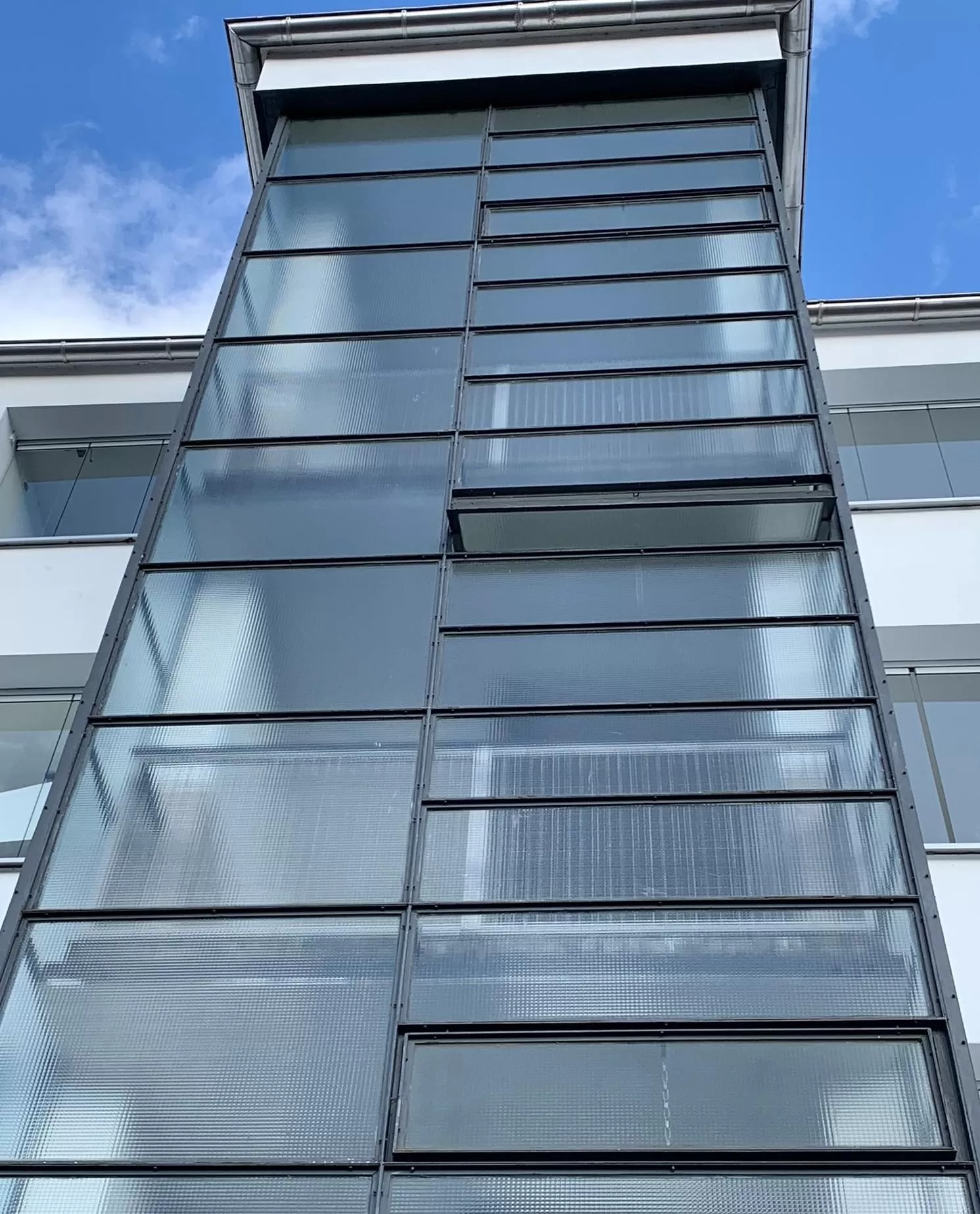
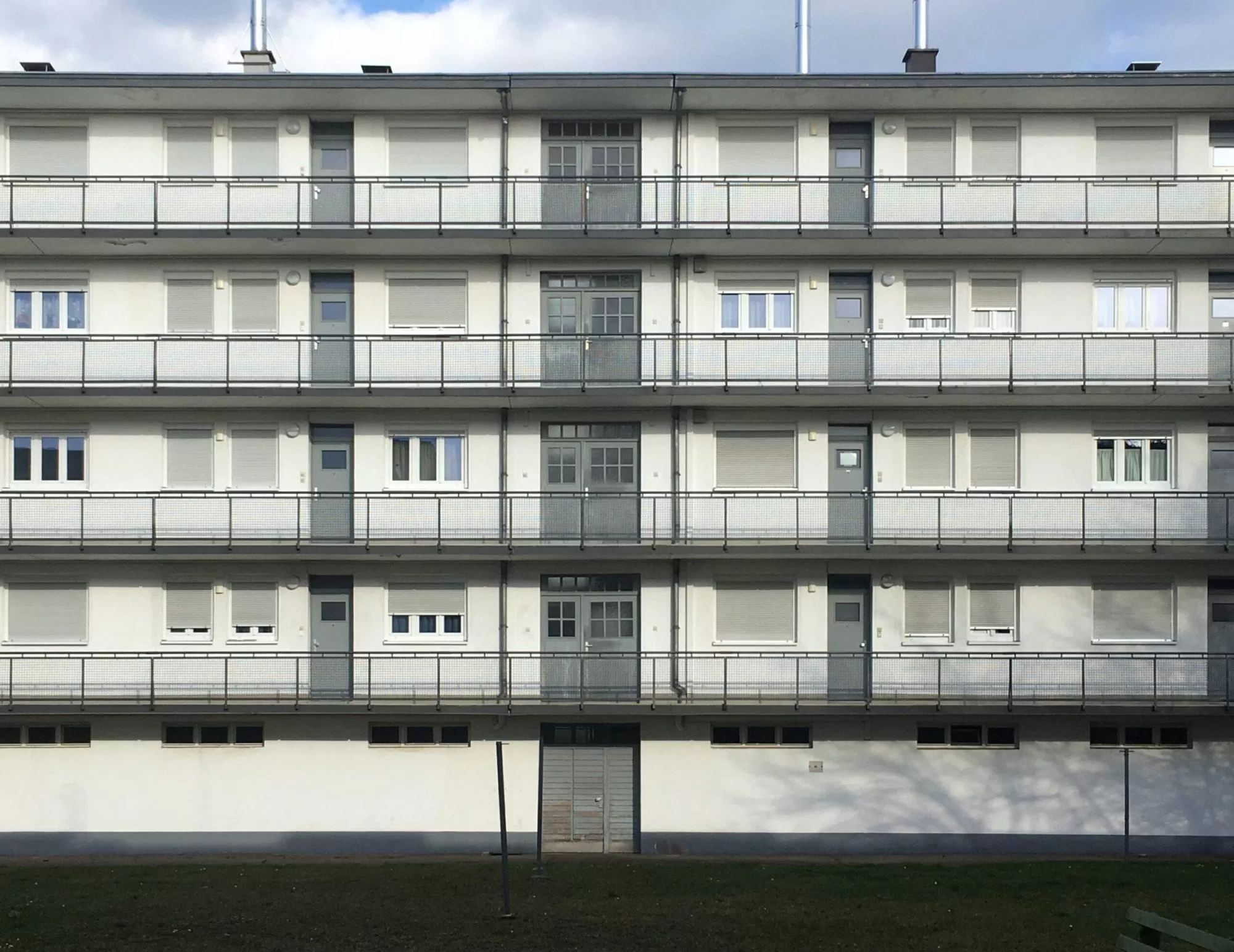
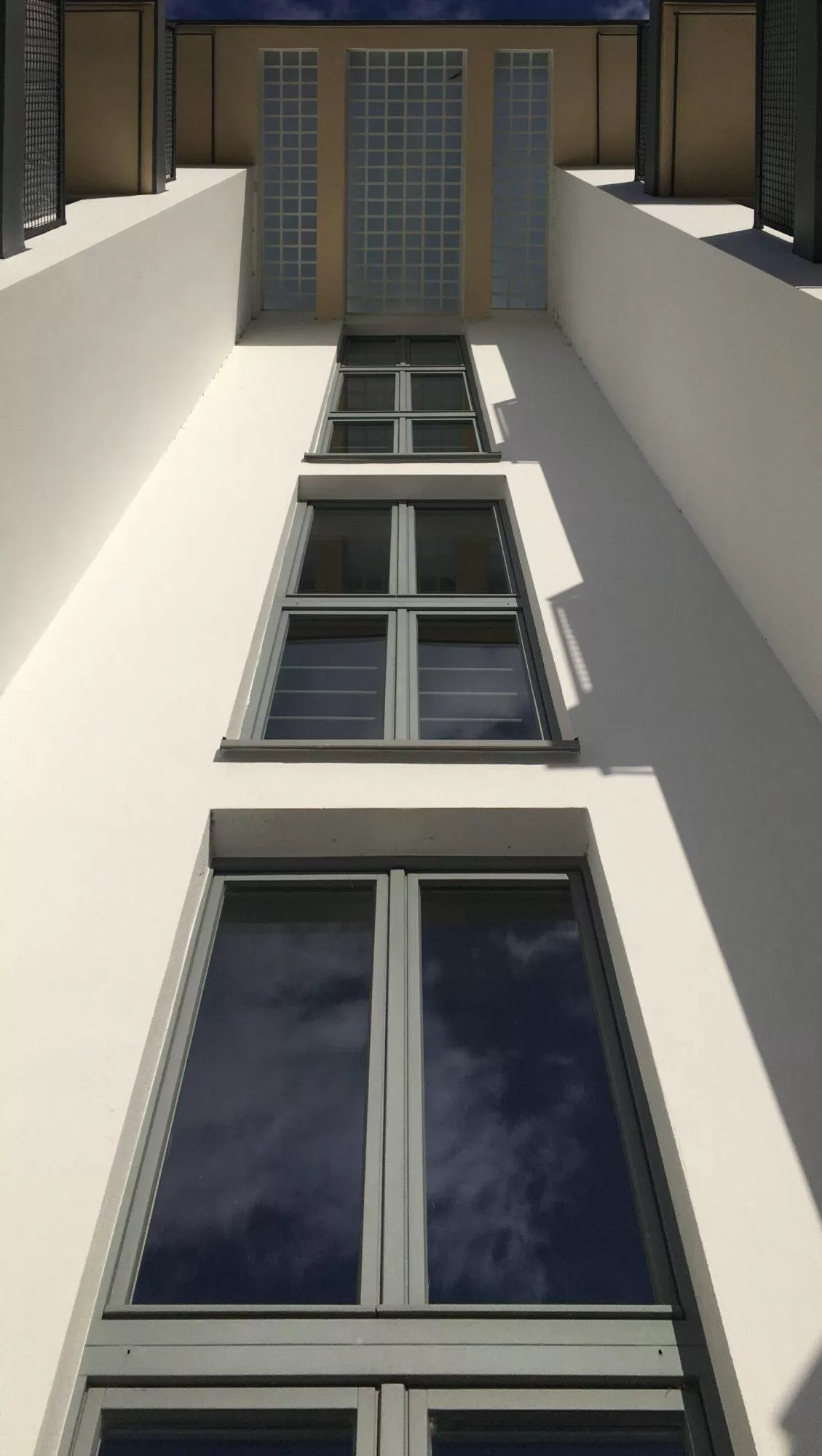
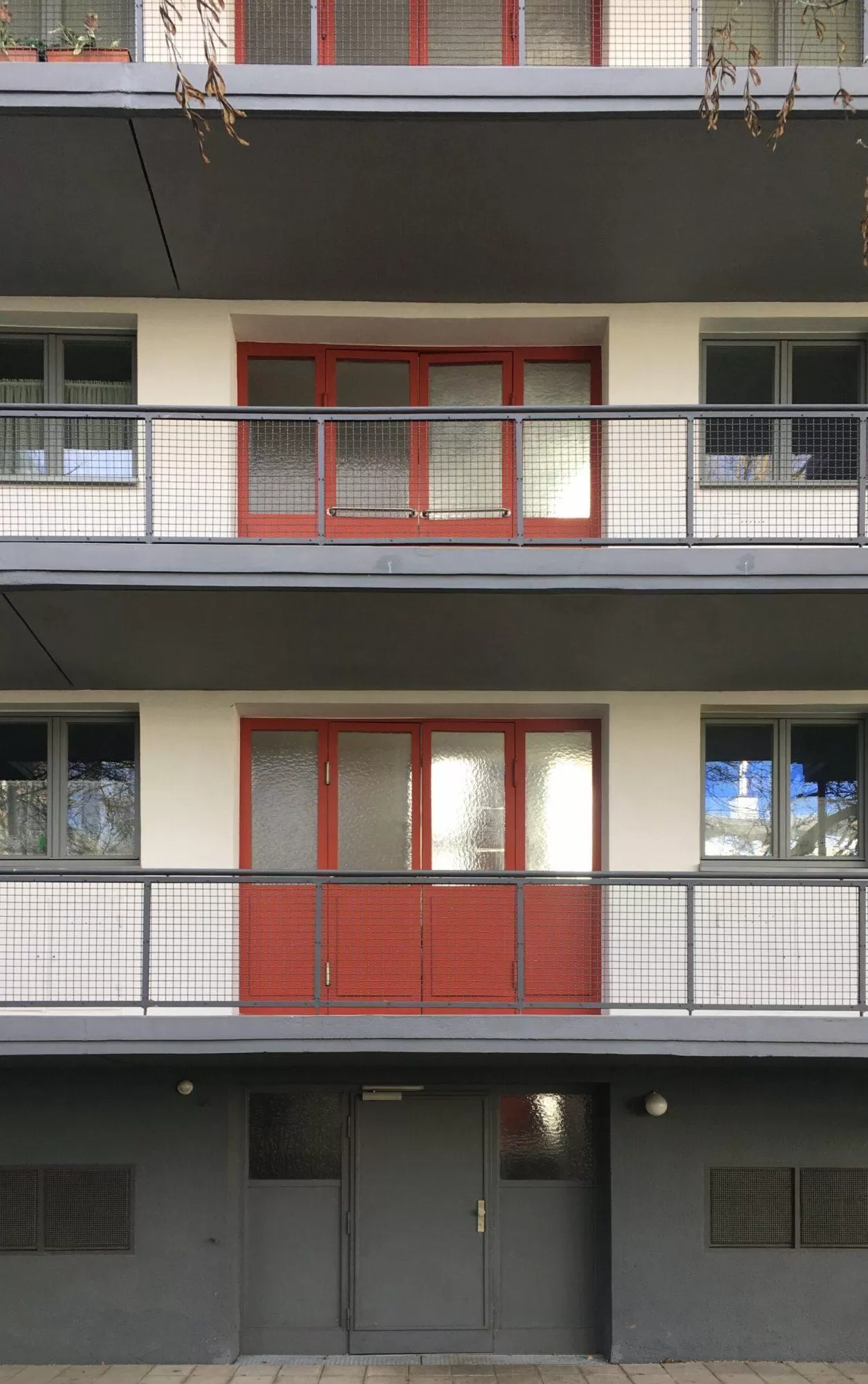
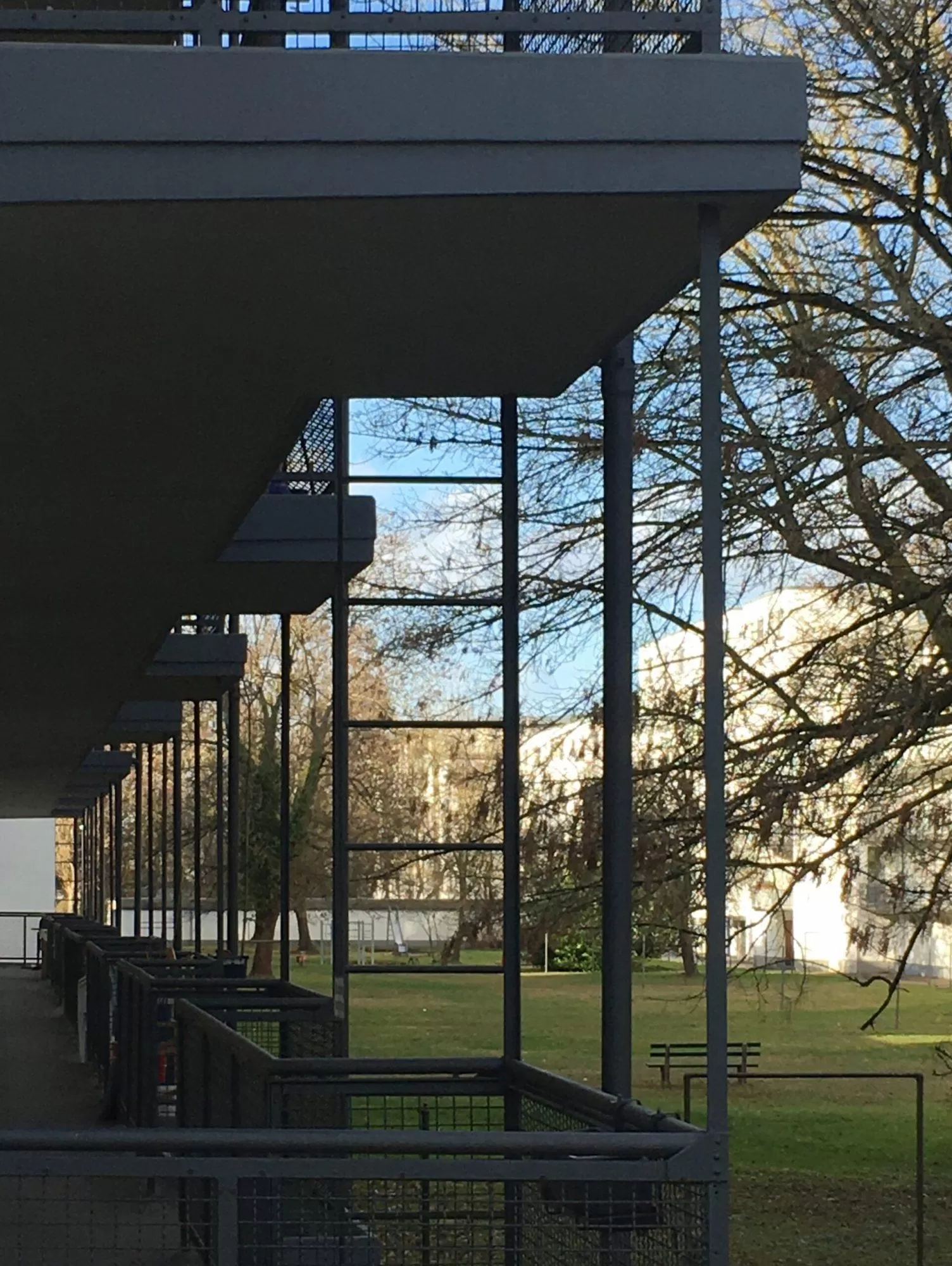
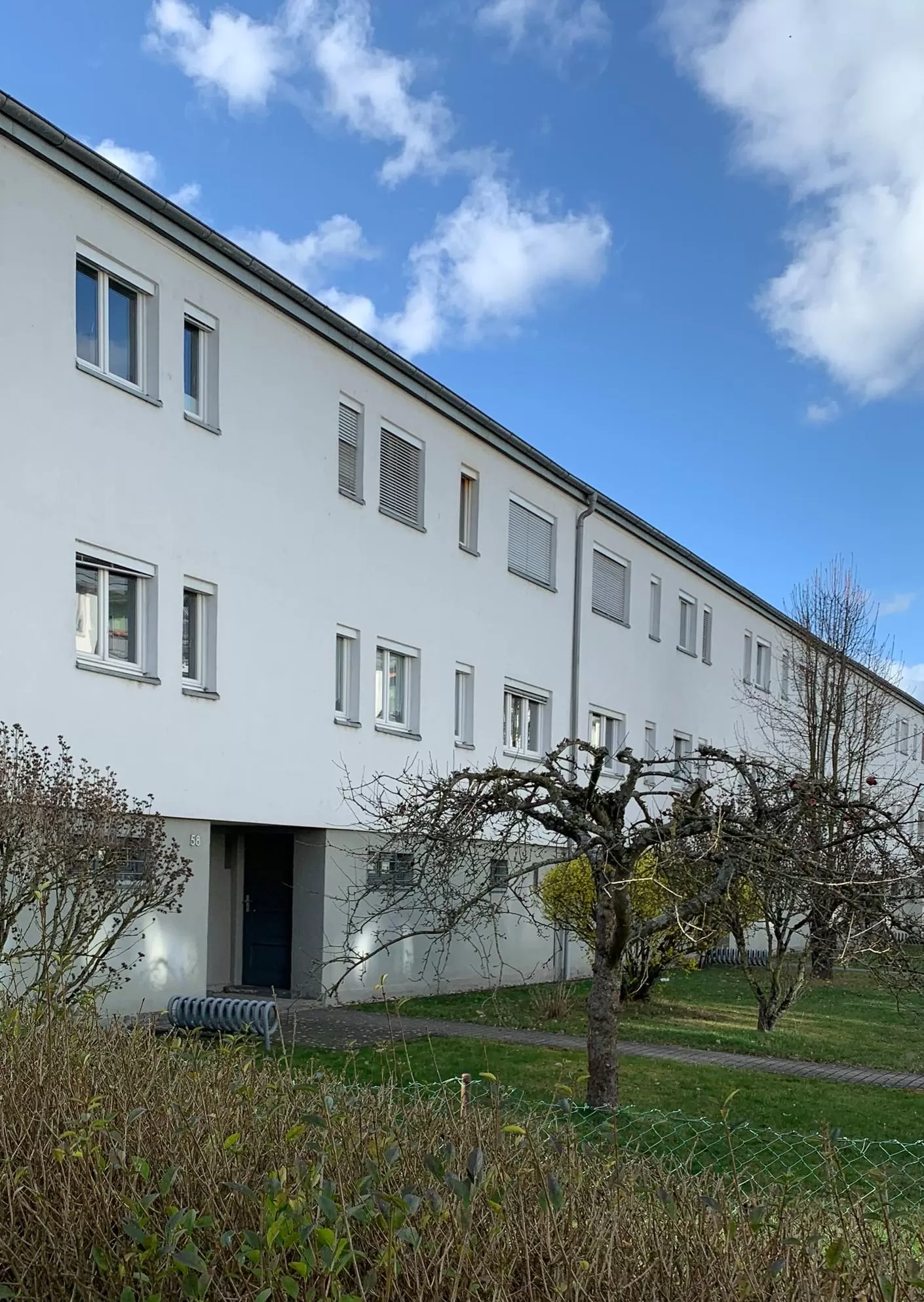
The textured glass and mullion pattern in the stair towers is most striking. Particularly like the operable windows being vision glass to distinguish them from the fixed textured glazing. A Gropius Building that I was unfamiliar until now.